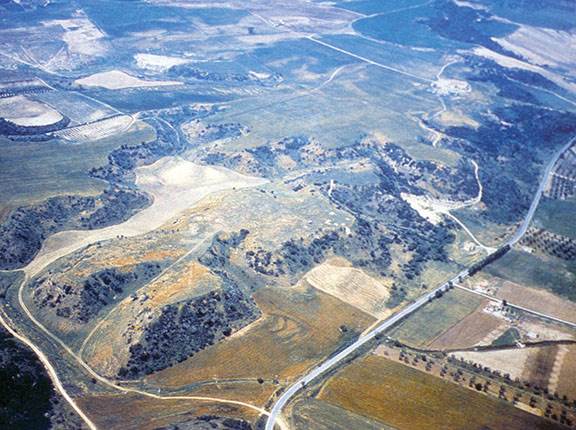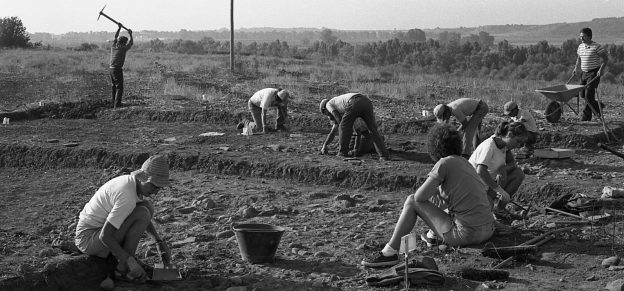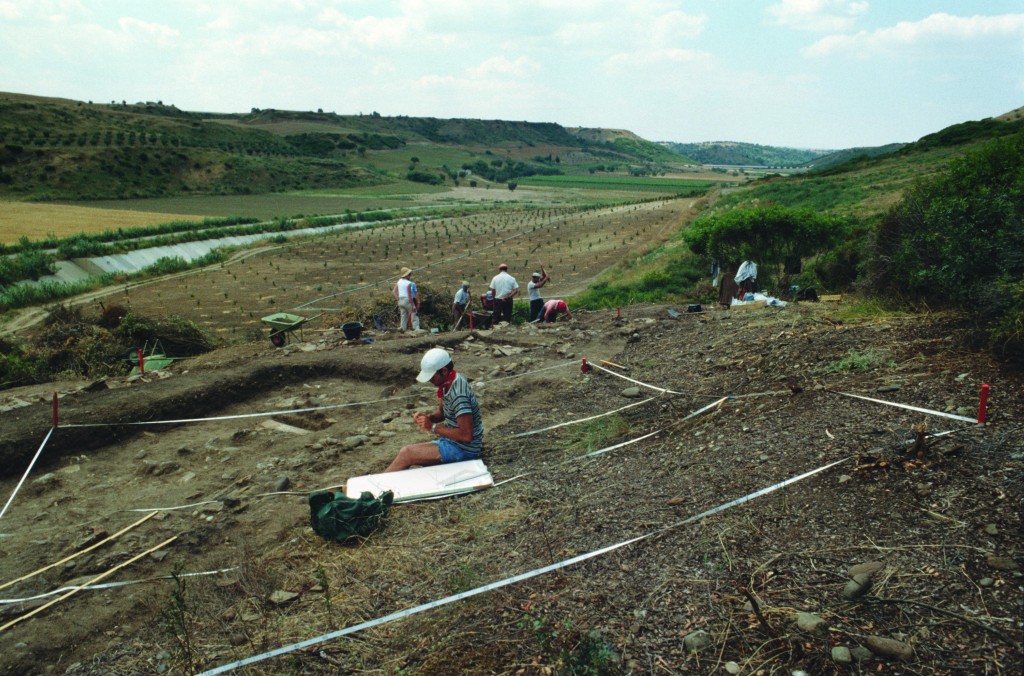 The Chora of Metaponto 5: A Greek Farmhouse at Ponte Fabrizio is the fifth volume in the Institute
The Chora of Metaponto 5: A Greek Farmhouse at Ponte Fabrizio is the fifth volume in the Institute
of Classical Archaeology’s series on rural settlements in the countryside (chora) of Metaponto. The book is a study of the 4th-century BC farmhouse known as Fattoria Fabrizio, located in the heart of the surveyed chora in the Venella valley (at Ponte Fabrizio). This simple structure richly illustrates the life of 4th-century BC Metapontine farmers of modest means.
To examine the ARK database of records from Fattoria Fabrizio, click here.
 Thorough interpretations of the farmhouse structure in its wider historical and socioeconomic contexts are accompanied by comprehensive analyses of the archaeological finds. Among them is detailed evidence for the family cult, a rare archaeological contribution to the study of Greek religion in Magna Grecia. The entire range of local Greek ceramics has been studied, along with a limited number of imports. Together they reveal networks within the chora and trade beyond it, involving indigenous peoples of southern Italy, mainland Greeks, and the wider Mediterranean world. Along with the studies of traditional archaeological finds, archaeobotanical analyses have illuminated the rural economy of the farmhouse and the environment of the adjacent chora. Abundant Archaic pottery also documents an important occupation, during the first great flowering of the chora in the sixth century BC. This study provides an ideal complement to the four volumes of The Chora of Metaponto 3: Archaeological Field Survey—Bradano to Basento and an eloquent example of hundreds of farmhouses of this date identified throughout the chora by their surface remains alone.
Thorough interpretations of the farmhouse structure in its wider historical and socioeconomic contexts are accompanied by comprehensive analyses of the archaeological finds. Among them is detailed evidence for the family cult, a rare archaeological contribution to the study of Greek religion in Magna Grecia. The entire range of local Greek ceramics has been studied, along with a limited number of imports. Together they reveal networks within the chora and trade beyond it, involving indigenous peoples of southern Italy, mainland Greeks, and the wider Mediterranean world. Along with the studies of traditional archaeological finds, archaeobotanical analyses have illuminated the rural economy of the farmhouse and the environment of the adjacent chora. Abundant Archaic pottery also documents an important occupation, during the first great flowering of the chora in the sixth century BC. This study provides an ideal complement to the four volumes of The Chora of Metaponto 3: Archaeological Field Survey—Bradano to Basento and an eloquent example of hundreds of farmhouses of this date identified throughout the chora by their surface remains alone.
The protohistoric village of Incoronata, 8 kilometers inland from Metaponto, will be the subject of an upcoming volume in The Chora of Metaponto series. This will be the comprehensive publication of the site, which has figured prominently in discussions of early Greek colonization in southern Italy since its discovery in 1971. ICA’s excavations (1977–1978) covered a large area of the hilltop site, recovering evidence of a variety of structures and archaeological materials: the native Oenotrian in the 8th century BC, the huts of the early 7th and the rectangular structures of the mid-7th century, and a unique example on the site of an early-6th-century BC Greek sanctuary. The study will present the history, archaeology, and systematic study of some 33,000 finds from the site, tracing the phases of its development with drawings, photographs, and detailed architectural reconstructions.
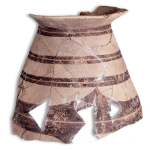
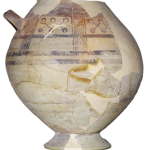
The Chora of Metaponto 4: The Late Roman Farmhouse at San Biagio is the fourth volume in the Institute of Classical Archaeology’s series on rural settlements in the countryside (chora) of Metaponto. It presents the excavation of the Late Roman (3rd- and 4th-century AD) farmhouse at San Biagio. Located near the site of an earlier, well-known Greek sanctuary, this modest but well-appointed structure was an unexpected find that provides a snapshot of the rural daily life of farmers of modest means from a period generally marked by large landholdings and monumental villas. Description of Neolithic and Greek periods of occupation is followed in the text by a detailed discussion of the farmhouse itself and its historical and socioeconomic context. The catalogs and analyses of finds include impressive deposits of coins from the late third and early fourth centuries AD. Use of virtual reality CAD software has yielded a deeper understanding of the architectural structure and its reconstruction. A remarkable feature is the small bath complex, with its examples of window glass. This study reveals the existence of a small but viable rural social and economic entity and alternative to the traditional image of crisis and decline during the Late Imperial period.
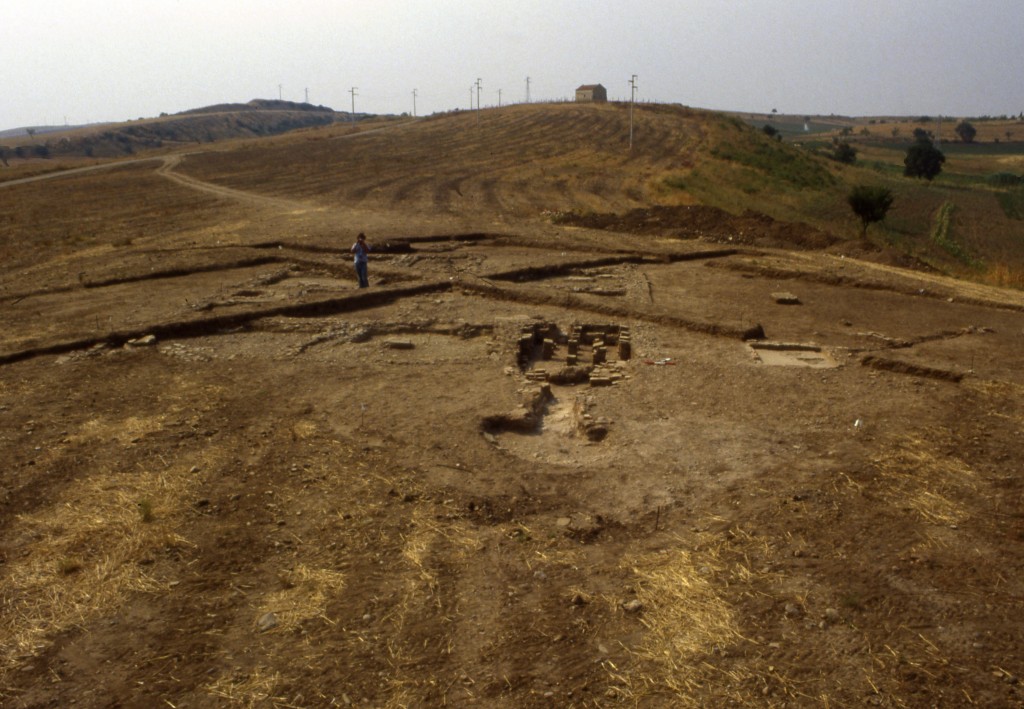
The Chora of Metaponto 6: A Greek Settlement at Sant’Angelo Vecchio is the sixth title in the Institute of Classical Archaeology’s series on the rural countryside (chora) of Metaponto. Located on a slope overlooking the Basento River, the site has borne witness to the various lives and transformations of a central part of the Metapontino from prehistory through the current day. Its evidence recounts and illustrates the extraordinary variety of settlements and uses of the territory commonly encountered throughout the landscape’s history.
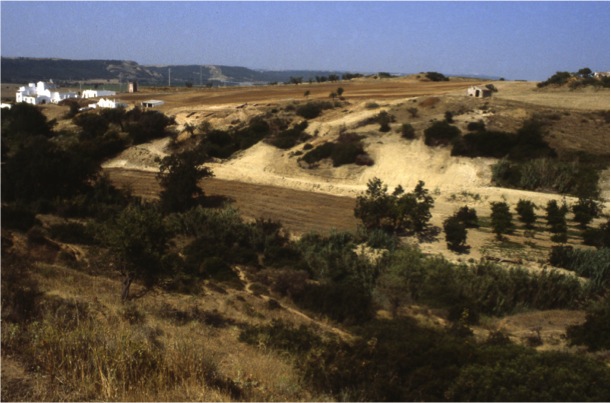
The excavations, held between 1979 and 1981, brought to light a Late Archaic farmhouse, evidence for the presence of a sanctuary near a spring, and a cluster of eight burials of the mid-5th century BC, but the most impressive remains belong to a production area with kilns. Active in the Hellenistic, Late Republican, and Early Roman periods, these kilns illuminate important and lesser-known features of production in the chora of a Greek city, and also allow us to trace the occupation of the territory in the Late Republican and Early Imperial periods.
The thorough, diachronic presentation of the evidence is complemented by specialist studies on the environment, the landscape, and the artifacts (including ceramics, architectural terracottas, kiln and workshop furniture, tiles, and metals), which range in date from Prehistory to the Post-Medieval period. Significantly, the majority of the evidence from Sant’Angelo Vecchio spans the range of Greek site types (farmhouse, necropolis, sanctuary, and production center) as well as the Greek dates (from the Archaic to Early Imperial periods) highlighted during ICA’s survey of the Metapontine chora. In this regard, the study enhances the four volumes of The Chora of Metaponto 3: Archaeological Field Survey—Bradano to Basento (University of Texas Press, 2011) and provides further insight on the ways in which sites in the chora interacted throughout its history.
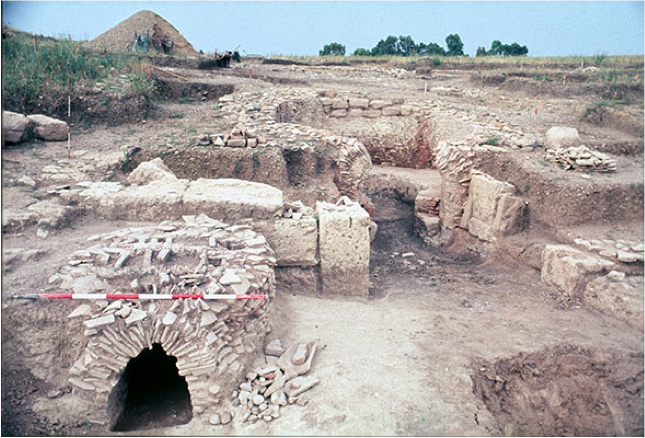 Like its neighbor Sant’Angelo Vecchio, Pantanello was not only the site of a Greek sanctuary, but also a center of ceramic production. When Pantanello revived in the 2nd century BC under new management, and for the next three centuries, it was exclusively a factory, a major producer of amphorae and the grey ware pottery that replaced black gloss as the fine pottery of this world.
Like its neighbor Sant’Angelo Vecchio, Pantanello was not only the site of a Greek sanctuary, but also a center of ceramic production. When Pantanello revived in the 2nd century BC under new management, and for the next three centuries, it was exclusively a factory, a major producer of amphorae and the grey ware pottery that replaced black gloss as the fine pottery of this world.

The structure and its kilns rank as one of the largest and best-preserved ceramic production centers in the south of Italy, and its enormous deposit of “wasters” and other discards documents as no other site the evolution of pottery production from the Late Hellenistic to the Early Imperial period. Mixed with the pottery were the bones of some of the largest horses and cattle in the Greek and Roman world. The chora was, as Pindar knew it, truly hippótrophos, nourisher of horses.
Welcome
Welcome to the digital companion site for the Chora of Metaponto series. This site aims to provide readers with a less linear approach to the print publications, as well as access to the rich data collections that lie behind them. Please see our guide to the research data collections for more information.
Celebrating over 20 years of publications
The Chora of Metaponto print series is now well advanced, with six additional titles and an upcoming seventh title since the first award-winning publication, Necropoleis (1998).
Titles 2 through 7 are available for sale with the University of Texas Press. The eighth title will be available in 2019 from British Archaeological Reports. For assistance with copyright and permissions for the print series, click here.
For more information about the Institute of Classical Archaeology at the University of Texas at Austin, please visit our website or send us an email at ica@austin.utexas.edu.
 The Chora of Metaponto 5: A Greek Farmhouse at Ponte Fabrizio is the fifth volume in the Institute
The Chora of Metaponto 5: A Greek Farmhouse at Ponte Fabrizio is the fifth volume in the Institute Thorough interpretations of the farmhouse structure in its wider historical and socioeconomic contexts are accompanied by comprehensive analyses of the archaeological finds. Among them is detailed evidence for the family cult, a rare archaeological contribution to the study of Greek religion in Magna Grecia. The entire range of local Greek ceramics has been studied, along with a limited number of imports. Together they reveal networks within the chora and trade beyond it, involving indigenous peoples of southern Italy, mainland Greeks, and the wider Mediterranean world. Along with the studies of traditional archaeological finds, archaeobotanical analyses have illuminated the rural economy of the farmhouse and the environment of the adjacent chora. Abundant Archaic pottery also documents an important occupation, during the first great flowering of the chora in the sixth century BC. This study provides an ideal complement to the four volumes of The Chora of Metaponto 3: Archaeological Field Survey—Bradano to Basento and an eloquent example of hundreds of farmhouses of this date identified throughout the chora by their surface remains alone.
Thorough interpretations of the farmhouse structure in its wider historical and socioeconomic contexts are accompanied by comprehensive analyses of the archaeological finds. Among them is detailed evidence for the family cult, a rare archaeological contribution to the study of Greek religion in Magna Grecia. The entire range of local Greek ceramics has been studied, along with a limited number of imports. Together they reveal networks within the chora and trade beyond it, involving indigenous peoples of southern Italy, mainland Greeks, and the wider Mediterranean world. Along with the studies of traditional archaeological finds, archaeobotanical analyses have illuminated the rural economy of the farmhouse and the environment of the adjacent chora. Abundant Archaic pottery also documents an important occupation, during the first great flowering of the chora in the sixth century BC. This study provides an ideal complement to the four volumes of The Chora of Metaponto 3: Archaeological Field Survey—Bradano to Basento and an eloquent example of hundreds of farmhouses of this date identified throughout the chora by their surface remains alone.